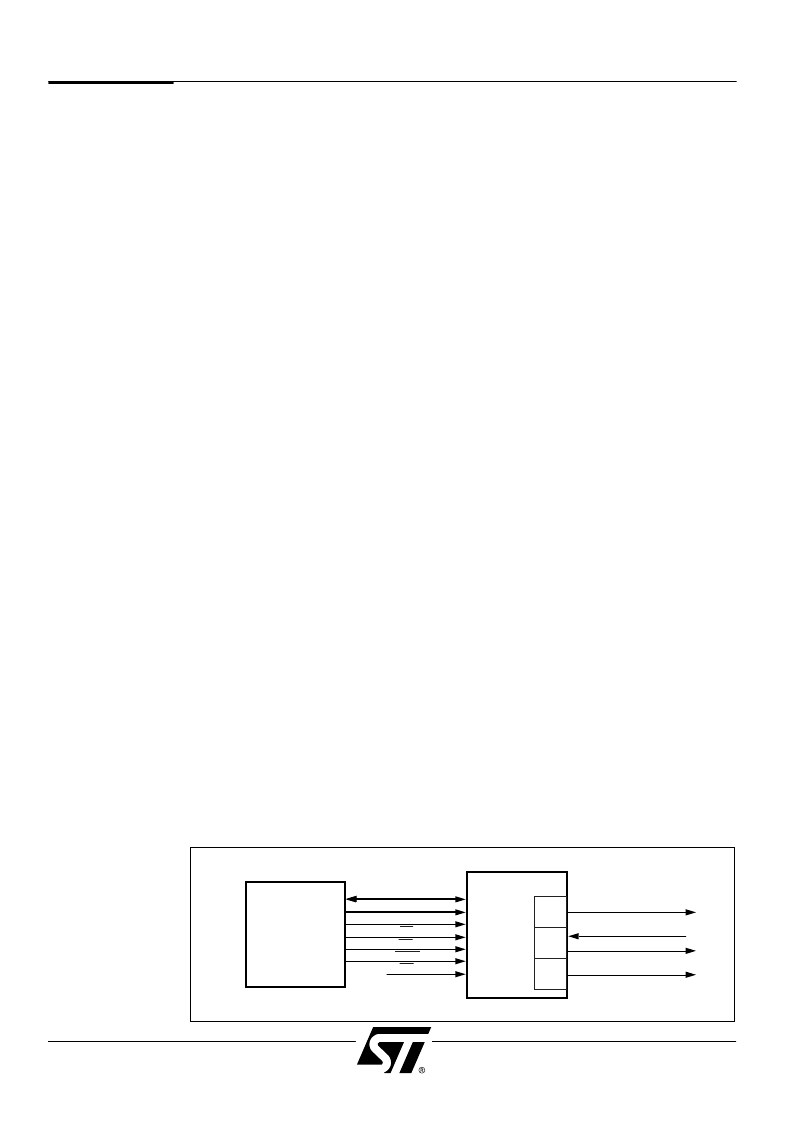- 您現(xiàn)在的位置:買賣IC網(wǎng) > PDF目錄376250 > PSD302V-A-20J (意法半導體) Low Cost Field Programmable Microcontroller Peripherals PDF資料下載
參數(shù)資料
| 型號: | PSD302V-A-20J |
| 廠商: | 意法半導體 |
| 英文描述: | Low Cost Field Programmable Microcontroller Peripherals |
| 中文描述: | 低成本現(xiàn)場可編程微控制器外圍設(shè)備 |
| 文件頁數(shù): | 35/85頁 |
| 文件大?。?/td> | 691K |
| 代理商: | PSD302V-A-20J |
第1頁第2頁第3頁第4頁第5頁第6頁第7頁第8頁第9頁第10頁第11頁第12頁第13頁第14頁第15頁第16頁第17頁第18頁第19頁第20頁第21頁第22頁第23頁第24頁第25頁第26頁第27頁第28頁第29頁第30頁第31頁第32頁第33頁第34頁當前第35頁第36頁第37頁第38頁第39頁第40頁第41頁第42頁第43頁第44頁第45頁第46頁第47頁第48頁第49頁第50頁第51頁第52頁第53頁第54頁第55頁第56頁第57頁第58頁第59頁第60頁第61頁第62頁第63頁第64頁第65頁第66頁第67頁第68頁第69頁第70頁第71頁第72頁第73頁第74頁第75頁第76頁第77頁第78頁第79頁第80頁第81頁第82頁第83頁第84頁第85頁

PSD3XX Famly
32
16.0
Power
Management
(cont.)
16.5 Composite Frequency of the Input Signals to the PADLogic
The composite frequency of the input signals to the PADs is calculated by considering all
transitions on any PAD input signal (including the MCU address and control inputs). Once
you have calculated the composite frequency and know the number of product terms used,
you can determine the total AC current consumption of the PAD by using Figure 14 or
Figure 15. From the figures, notice that the DC component (f = 0 MHz) of PAD current is
essentially zero when the turbo feature is disabled, and that the AC component increases
as frequency increases.
When the turbo feature is disabled, the PAD logic can achieve low power consumption by
becoming active briefly, only when inputs change. For standard voltage (non-V) devices,
the PAD logic will stay active for 25 nsec after it detects a transition on any input. If there
are more transitions on any PAD input within the 25 nsec period, these transitions will not
add to power consumption because the PAD logic is already active. This effect helps
reduce the overall composite frequency value. In other words, narrowly spaced groups of
transitions on input signals may count as just one transition when estimating the composite
frequency.
Note that the “knee” frequency in Figure 14 is 40 MHz, which means that the PAD will
consume less power only if the composite frequency of all PAD inputs is less than 40 MHz.
When the composite frequency is above 40 MHz, the PAD logic never gets a chance to shut
down (inputs are spaced less than 25 nsec) and no power savings can be achieved. Figure
15 is for low-voltage devices in which the “knee” frequency is 20 MHz.
Take the following steps to calculate the composite frequency:
1) Determine your highest frequency input for either PAD A or PAD B.
2) Calculate the period of this input and use this period as a basis for determining the
composite frequency.
3) Examine the remaining PAD input signals within this base period to determine the
number of distinct transitions.
4) Signal transitions that are spaced further than 25 nsec apart count as a distinct transition
(50 nsec for low-voltage V devices). Signal transitions spaced closer than 25 nsec count
as the same transition.
5) Count up the number of distinct transitions and divide that into the value of the base
period.
6) The result is the period of the composite frequency. Divide into one to get the composite
frequency value.
Unfortunately, this procedure is complicated and usually not deterministic since different
inputs may be changing in various cycles. Therefore, we recommend you think of the
situation that has the most activity on the inputs to the PLD and use this to calculate the
composite frequency. Then you will have a number that represents your best estimate at
the worst case scenario.
Since this is a complicated process, the following example should help.
Example Composite Frequency Calculation
Suppose you had the following circuit:
80C31
(12 MHz
Crystal)
PSD3XX
PA
PB
PC
AD0-AD7
A8-A15
ALE
RD
WR
PSEN
CSI
Latched Address
Output (LA0-LA7)
3 Inputs: Int, Sel, Rdy
5 MCU I/O Outputs
3 Chip-Select Outputs
相關(guān)PDF資料 |
PDF描述 |
|---|---|
| PSD302V-A-20JI | PLCC Socket |
| PSD302V-A-20JM | Low Cost Field Programmable Microcontroller Peripherals |
| PSD303-90J | Low Cost Field Programmable Microcontroller Peripherals |
| PSD303-90JI | Low Cost Field Programmable Microcontroller Peripherals |
| PSD303-90JM | Low Cost Field Programmable Microcontroller Peripherals |
相關(guān)代理商/技術(shù)參數(shù) |
參數(shù)描述 |
|---|---|
| PSD302V-A-20JI | 制造商:STMICROELECTRONICS 制造商全稱:STMicroelectronics 功能描述:Low Cost Field Programmable Microcontroller Peripherals |
| PSD302V-A-20JM | 制造商:STMICROELECTRONICS 制造商全稱:STMicroelectronics 功能描述:Low Cost Field Programmable Microcontroller Peripherals |
| PSD302V-A-25J | 制造商:STMICROELECTRONICS 制造商全稱:STMicroelectronics 功能描述:Low Cost Field Programmable Microcontroller Peripherals |
| PSD302V-A-25JI | 制造商:STMICROELECTRONICS 制造商全稱:STMicroelectronics 功能描述:Low Cost Field Programmable Microcontroller Peripherals |
| PSD302V-A-25JM | 制造商:STMICROELECTRONICS 制造商全稱:STMicroelectronics 功能描述:Low Cost Field Programmable Microcontroller Peripherals |
發(fā)布緊急采購,3分鐘左右您將得到回復。